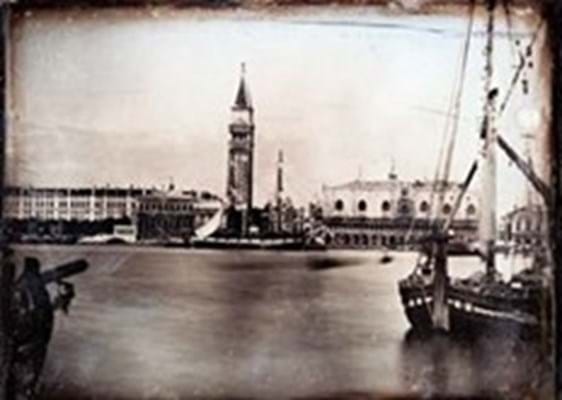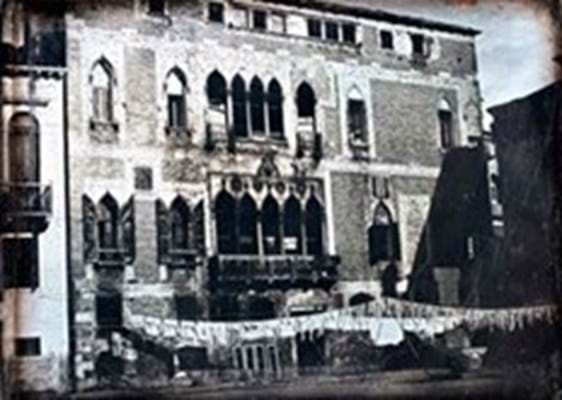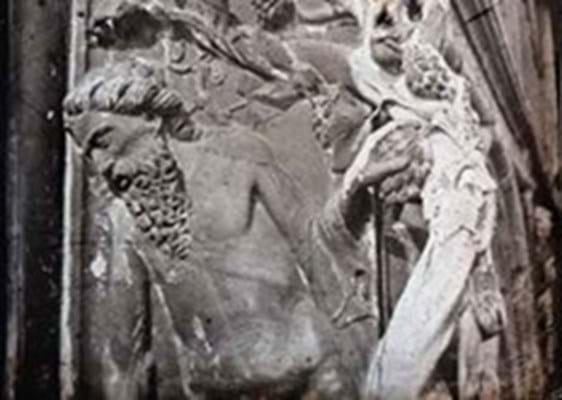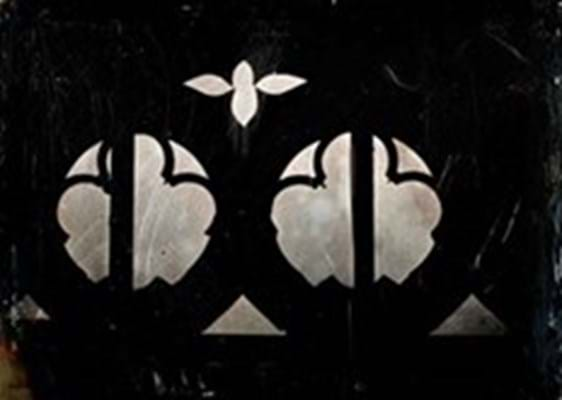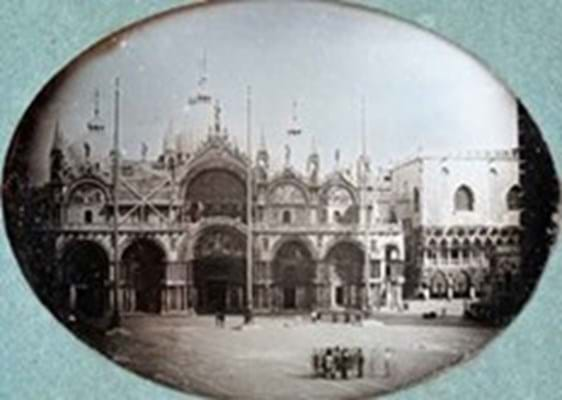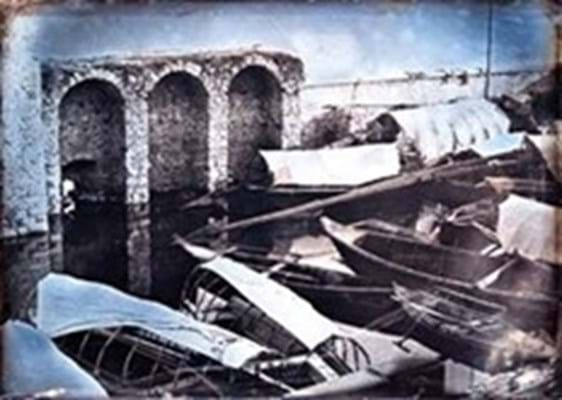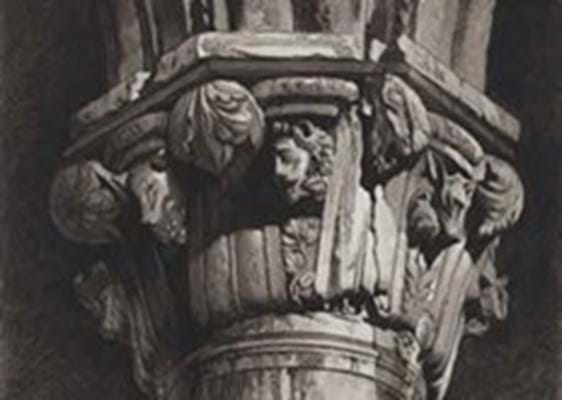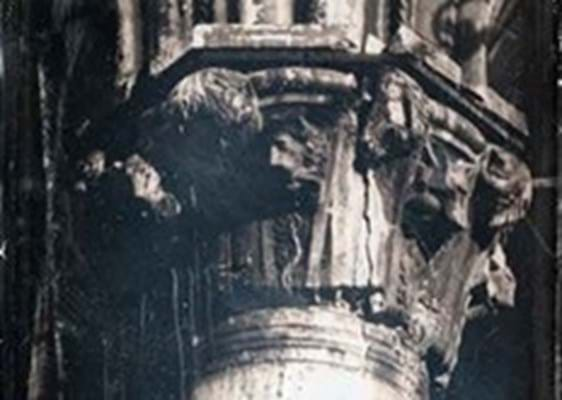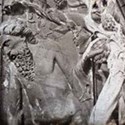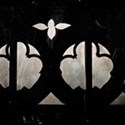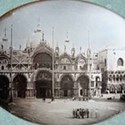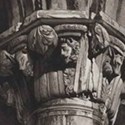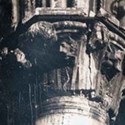The inspiration for Carrying Off the Palaces: John Ruskin's Lost Daguerreotypes, penned by Ken and Jenny Jacobson and published by book dealers Quaritch, was a remarkable discovery made by the authors at a Cumbrian auction in 2006.
As reported in ATG at the time, it was while searching the internet for vintage photographs at upcoming sales in March 2006 that Ken Jacobson, an American photograph dealer and collector for the past 35 years who lives in Essex, first spotted a brief but intriguing catalogue description for 188 "images on metal" at Penrith Farmers' & Kidd. They came in a mahogany box with an ivory plaque simply inscribed Venice.
Digital images and a conversation with the auctioneer convinced the Jacobsons to make the journey to the north-west.
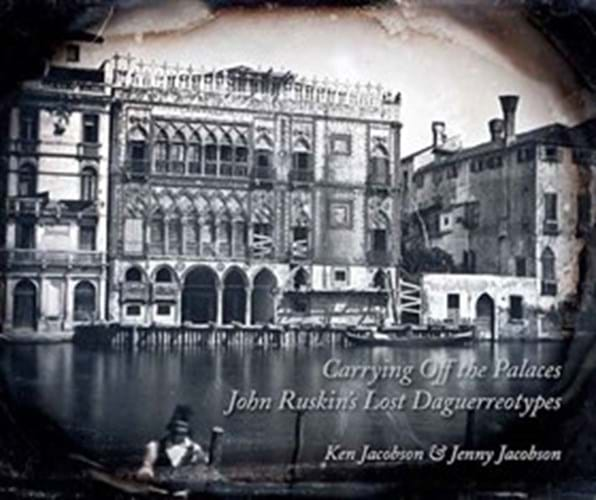
The front cover to 'Carrying Off the Palaces: John Ruskin's Lost Daguerreotypes', by Ken and Jenny Jacobson depicts a view of the Ca' d'Oro on the Grand Canal. It was among the cache of 135 early photographs - part of the photographic record collected, commissioned and produced by Ruskin - acquired by the authors at auction in 2006.
Already playing a hunch, they took a detour via the Ruskin Library at Lancaster University where they could make a comparative inspection of the daguerreotypes - c.1850 photographic images captured on silver-coated copper plates - in the Bembridge collection of Ruskin's effects assembled by enthusiast John Whitehouse in the 1930s.
The mounts and hand-written serial numbers would prove to be the same as those on the plates at PFK, while a reproduction of Ruskin's daguerreotype inventory (his diaries recorded that he owned 233 daguerreotypes) confirmed that a substantial number had long been considered lost.
Of around 120 Venetian subjects recorded in Ruskin's daguerreotype inventory, only about 30 had been traced.
It emerged too that the cache had been sent for auction by an elderly Cumbrian seller whose family had owned them for at least 50 years. They were probably among the many Ruskin items dispersed into the Lakeland community when the contents of Brantwood, Ruskin's home near Coniston, were laid out on the lawns on a rainy day in 1936 and sold in a distress sale.
Winning Bid
Although the Jacobsons had hoped to buy the lot closer to its £80-120 estimate, their winning bid of £75,000 (a house record for PFK) had been well within their budget. Fellow dealer and enthusiast Ian Sumner, also confident of their history and a potential value of around £500,000, was the underbidder. He told his story to The Daily Telegraph in the days after the sale.
Eight years on and the many scenes of Italy, France and Switzerland are now considered the largest collection of daguerreotypes of Venice in the world and probably the earliest surviving photographs of the Alps. Many reveal surprising compositions and provide an insight into how Ruskin's own watercolours were influenced by them.
Technical Procedures
Despite his sometimes vehemently negative sentiments regarding the camera, Ruskin never stopped using photography to record his trips to Italy and the Alps to study nature and architecture. He assiduously collected, commissioned and produced daguerreotypes and paper photographs, and he pioneered the use of the collotype and platinotype processes for book illustration.
Core to this 432-page book (priced at £85, or £75 until March 31) is a fully illustrated catalogue raisonné of the 325 known Ruskin daguerreotypes.The majority of the newly discovered plates are published here for the first time among a total of 601 illustrations. Ten chapters study Ruskin's photographic endeavours with another describing the technical procedures used in conserving the photographs. Some of the images had been in poor condition, their ghostly impressions almost invisible when viewed in Penrith.
Ken Jacobson said of the remarkable odyssey: "The discovery of 188 previously unknown John Ruskin daguerreotypes has been the most exciting of our career. The propitious circumstances of this find were truly magnified many times over by the fascinating discoveries we made during our research and the generosity, intelligence and friendship we shared with other scholars and our conservators.
"We feel that the quality and unorthodox style of many of Ruskin's daguerreotypes will come as a major surprise to both photographic historians and those in the field of Ruskin scholarship. It is an astonishing accomplishment for a polymath better known for his achievements in so many other disciplines. Ruskin's daguerreotypes would be a sensational new revelation in the history of photography even if he were completely unknown. We hope the work will be as intriguing to others as it has been to us."
Three of the daguerreotypes will be on show when Quaritch hold a book launch at their South Audley Street gallery on March 18. They say the photographs are "not for sale at the moment".


